Keeping up with the shifts in education can be a challenge, and the demand to have a technology-forward K‑12 enterprise resource planning (ERP) has never been greater. Paperless processes, centralized information, and automatic documentation are becoming the standard practice. Does your district have the ability to easily organize and share data across multiple departments? Without the right tools, connecting the administrative processes and data throughout the district can seem overwhelming. Using ERP software helps boost efficiency. It helps to streamline and execute strategies easily.
Why is ERP important for students?
A school ERP system organizes and simplifies operations, enabling staff and educators to direct more resources toward student needs. A modern system automates processes to improve facilities management, recruiting and hiring, and purchasing and receiving. Detailed data-insights and real-time reporting informs decision making at every level. Implementing a K‑12 ERP system ensures schools and districts operate at their best each day while planning for the future, so students get the education they deserve.
A modern K‑12 ERP system offers the building blocks for simplicity, efficiency, and data-driven decision making
ERP platforms empower companies, organizations, and school districts with the ability to manage processes across multiple entities and create standard practices and procedures that can easily be tracked and adjusted in real time. Districts also increase efficiency because work isn’t repeated, and documents aren’t duplicated.
Organization is the key to running an efficient and effective K‑12 district. Let’s take a quick look at an ERP’s fundamental features and benefits.
A is for automation
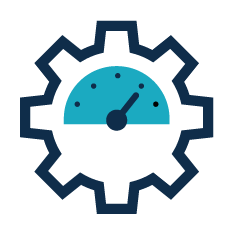
Time is the most valuable asset for you and your district. It is the only resource that is not renewable, so it’s critical to make the best use out of each day. Automation is the driving force that makes ERP software such an important tool for school districts. Automating traditionally manual practices saves time and relieves burdens from administrators so they can focus on more pressing tasks.
ERP platforms also mitigate risks by preventing human error and accidental data duplication, saving time and lowering overall labor costs.
B is for breaking it down
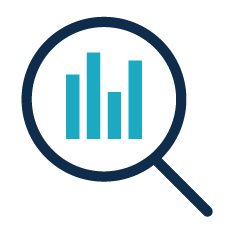
Knowledge is power, and ERP platforms put the strength of data analysis right into the hands of school districts. An ERP empowers you to examine the effectiveness of an operation by providing an accurate picture of how well processes are working. This understanding is key to running a streamlined school district.
ERP software can study multiple factors and provide real time information that improves business insights. These deep dives into how a school or district is operating allow you to make improvements to existing systems, and also easily create entirely new processes. Because the new procedures are backed by data, there is no need to waste time with trial-and-error testing. ERPs empower administrative teams to take decisive actions to correct inefficient processes and confidently create new standard practices.
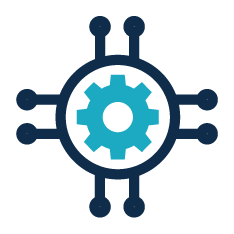
C is for centralization
No matter the size of your district, it’s critical to keep all of your schools and administrators in the same online solution. Cloud-based ERP software provides a centralized location for information that is essential to your operations. Having every aspect of your district on the same platform supports compliance and clear communications.
Implementing one source of information across the district makes it possible to keep everyone on the same page. When it’s time to start a new project or fix a structural problem, having all your data in one, secure location—the ERP—makes it easy to consistently communicate and complete tasks. This is key for accurate financial reporting and reimbursement.

D is for data security
Prevent unwanted downtime and loss of crucial information with cloud-based ERP security. Dependable IT protections, like firewalls and digital encryption, are built into the software. Proactively protecting sensitive data and keeping processes safe saves time and money in the long run.

E is for is for expanded scalability
School districts are not all the same size. With cloud-based ERP flexibility, districts can easily expand (or contract) with shifts in the district population. While desktop ERP solutions may still be a good solution for small districts, cloud-based ERP provides anytime, anywhere access that everyone enjoys.
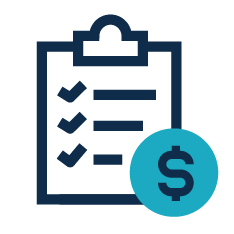
F is for financial management
Businesses and school districts alike have large budgets that have to be carefully monitored across all aspects of the organization. Overseeing finances is not something to be taken lightly. Being accountable to the state agencies, school boards, and other stakeholders is a serious matter. Streamline invoices, reduce billing errors, and save time by consolidating all the financial information with an ERP.

G is for greater transparency
With so many moving parts in a school district, it’s important to not only track payroll, inventory, and employee status, but to have this information readily available and organized in a clear and digestible format. Trace transactions, view employee records, and analyze processes easily all within an integrated ERP platform. Having comprehensive knowledge of your district’s day-to-day activities and archived data helps guide planning and budgeting.
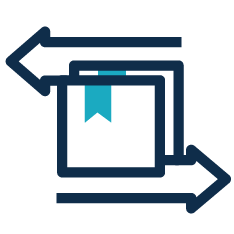
I is for inventory management
ERP platforms have the power to track and monitor inventory and help manage the supply chain. Plan how to procure and allocate resources efficiently across your district. Even organize shipments of supplies and manage fixed assets. ERP software helps prevent bottlenecks, provides transparency, and can be a useful tool for predicting inventory needs.

H is for human resources
In the current environment, the role of HR has become even more challenging. With the need to recruit, hire, onboard, pay, manage, and offboard employees, having an ERP is essential. Cover all aspects of running an organization’s HR program from recruitment to retirement with the powerful tools found in an ERP platform. You can effortlessly supervise employees, track attendance, and manage payrolls to improve retention.
K‑12 ERP delivers a simpler solution for finance and HR
K‑12 ERP platforms provide an all-in-one finance and HR tool that can assist every K‑12 district with their wide range of tasks and processes. From the daily organization of complex school district activities, like accounting and document sharing, to automating information collection and distribution, an education-specific ERP system centralizes complicated end-to-end processes. Drive efficiency, increase communication, secure data, and manage institutions on a scalable level, all in one centralized platform. Discover how LINQ ERP can help your school district earn an A+.
